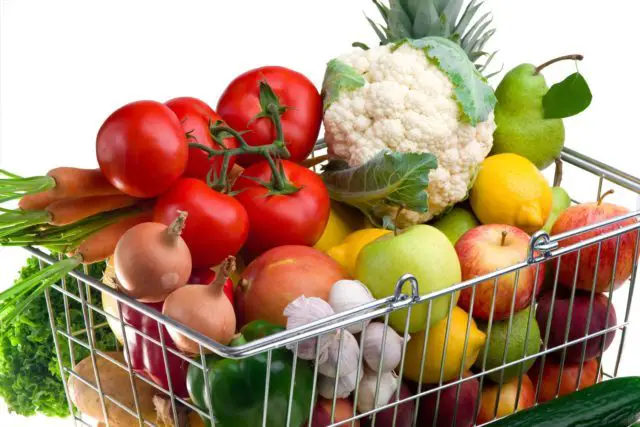Many people, when preparing fruits and vegetables, peel them by default. However, often it is not necessary. There are important nutrients in the skin. And what’s more, discarded fruit and vegetable peelings contribute to climate change.
Fruits and vegetables are rich sources of vitamins, minerals, fiber, and many phytochemicals (plant chemicals) including antioxidants (substances that protect cells).
Not eating enough of these nutrient-dense foods is linked to an increased risk of chronic diseases, including cardiovascular disease and type 2 diabetes. In 2017, the World Health Organization reported that about 3.9 million deaths a year around the world are attributed to people who do not eat enough fruits and vegetables.
Getting to eat 400 g of fruits and vegetables a day, as recommended by the WHO, is difficult for many people. So could eating fruits and vegetables with their skin on help with this problem by adding important nutrients to people’s diets?
The 5 foods to avoid for breakfast, according to science
They can certainly contribute. For example, nutritionally significant amounts of vitamins, such as vitamin C and riboflavin, and minerals such as iron and zinc are found in the skin of seven root vegetables: beetroot, wild mustard, wild carrot, sweet potato, radish, ginger, and White potato.
And the United States Department of Agriculture shows that unpeeled apples contain 15% more vitamin C, 267% more vitamin K, 20% more calcium, 19% more potassium, and 85% more fiber than their peeled counterparts. . Additionally, many peels are rich in biologically active phytochemicals, such as flavonoids and polyphenols, which have antioxidant and antimicrobial properties.
Another reason not to discard peelings is their effect on the environment. According to the Food and Agriculture Organization of the United Nations, uneaten food, including the peel, generates between 8% and 10% of the world’s greenhouse gas emissions. Food that rots in landfills releases methane, the most potent greenhouse gas.New Zealand alone, a country with a population of just 5.1 million people, reports an annual waste of 13,658 tons of vegetable peels and 986 tons of fruit peels.
Given the nutrient content of the skins, and their contribution to food waste, why do people peel fruits and vegetables?
Some must be peeled, as the outer parts aren`t inedible, do not taste good, are difficult to clean, or cause damage, such as banana, orange, melon, pineapple, mango, avocado, onion, and garlic. Also, peeling them can be a necessary part of the recipe, such as when making mashed potatoes. However, many peels, such as potato, beetroot, carrot, kiwi, and cucumber, are edible, although people peel them anyway.
Pesticide residue
Some people peel fruits and vegetables because they are concerned about pesticides that may be on the surface. Pesticide residues are certainly retained on or just below the surface, although this varies by plant species.
However, most of this residue can be removed by washing. In fact, the US Food and Drug Administration recommends that people wash produce thoroughly in cold water and scrub with a stiff brush to remove pesticides, dirt, and chemicals.Cooking techniques, such as boiling and steaming, can also reduce pesticide residues.

But not all pesticide residues are removed by washing and cooking. And people who are concerned about their exposure to pesticides may want to keep peeling them.In some countries there are lists on the amount of pesticides in fruits and vegetables, such as the one produced by the Pesticide Action Network for the United Kingdom. This can help you decide which fruits and vegetables to peel and which skins to eat.
If you’d like more information on fruit and vegetable skins and what to do with them, there are plenty of tips online on how to use the skins for composting, feeding a worm farm, or incorporating them into recipes.
10 foods that help you sleep better
With a little research and creativity you can help reduce waste and increase your intake of fruits and vegetables. Don’t you think it’s worth a try? And you’ll be helping to meet one of the UN’s sustainable development goals: halting food waste by 2030.

